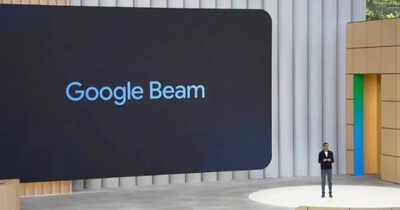Google Beam AI: The future of remote classrooms or just a corporate playground?

In an age where classrooms have gone digital and lectures stream across continents, one element of learning remains stubbornly hard to replicate: Presence. Despite the convenience of online platforms, students often describe remote education as flat, transactional, and emotionally distant.Now, Google is making a fresh attempt to change that.Unveiled at Google I/O 2025, Google Beam is a new communication tool that uses artificial intelligence, depth sensors, and multi-camera capture to generate 3D, life-size projections of people in real time. The goal is simple but ambitious: To make remote interaction feel indistinguishable from sitting across a table.
Google Beam captures a subject from multiple angles using six cameras and converts this input into a volumetric video feed.
Through advanced rendering and light-field display technology, the system can reproduce facial cues, body language, and eye contact with notable realism. According to Google, the tool runs at 60 frames per second and tracks motion with millimeter-level precision. In an educational setting, this could allow students and teachers to interact with greater emotional presence and nuance—elements that are often missing in standard two-dimensional video calls.
While Beam is currently being rolled out for enterprise use—through partners like HP and Zoom—its design opens several possibilities for education too.
Despite its potential, Beam is still in early stages. The hardware required is expensive and not yet widely available. Its current target market is corporate—meaning it may be years before schools or universities can afford or justify large-scale adoption. The setup requires a specialised light-field display, multiple high-end cameras, and high-speed data processing. There are also open questions around:
Additionally, privacy and data management will remain crucial concerns—especially in K-12 and higher education environments where student information is closely regulated.
If Google Beam or similar technologies become more affordable, they could influence how remote learning evolves over the next decade. As hybrid education becomes more prevalent, immersive tools may help bridge the gap between physical and virtual classrooms.Still, widespread adoption will likely depend on several factors: cost reduction, interoperability with existing infrastructure, and empirical evidence that the tool leads to measurable benefits for students and educators alike.
Google Beam offers a glimpse into what the future of virtual education might look like—more immersive, more natural, and potentially more inclusive. But for now, it remains a promising technology with limited reach. Whether it becomes a core part of educational infrastructure or stays a niche solution will depend on how institutions, policymakers, and tech providers respond to both its potential and its constraints.













